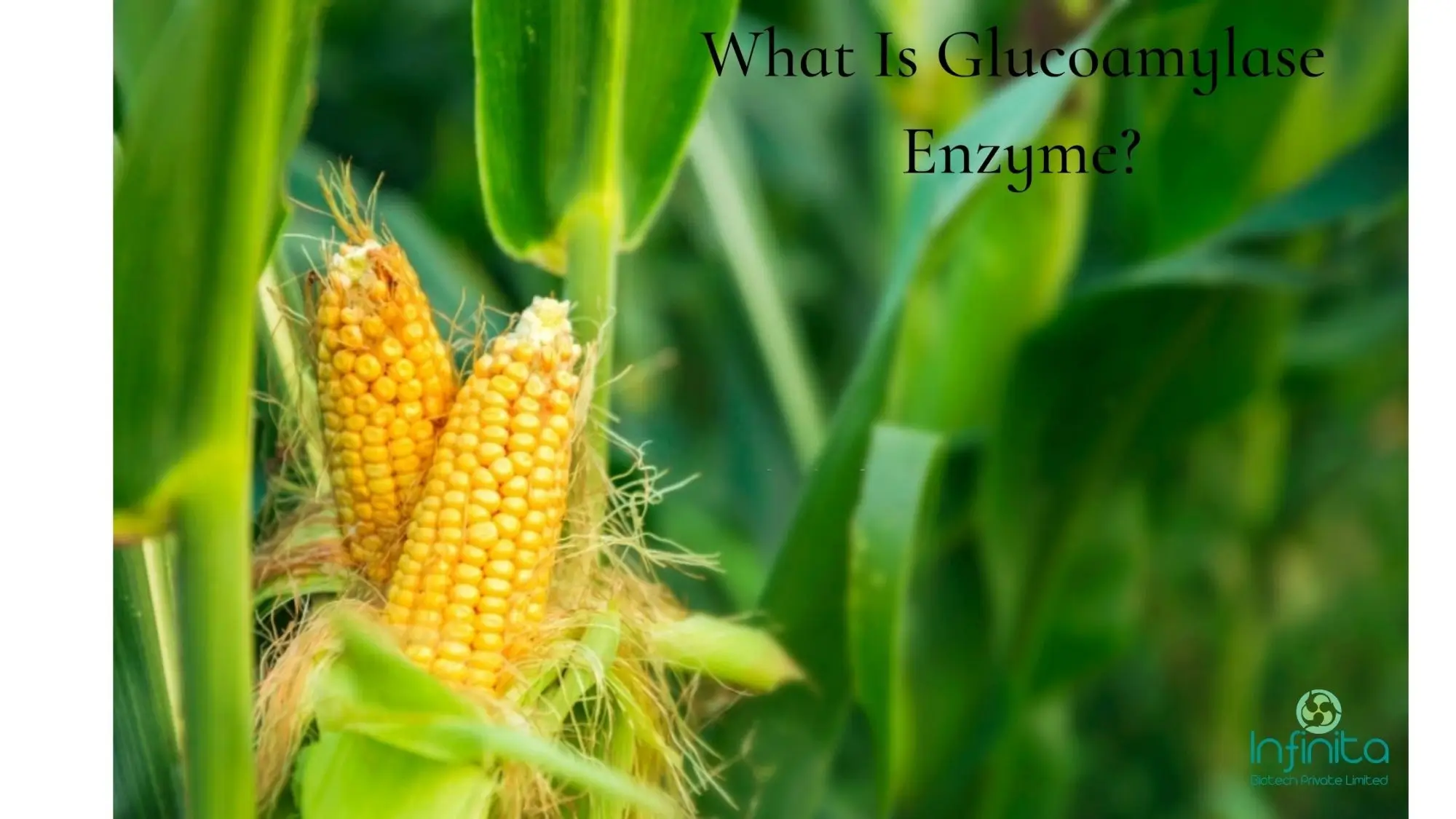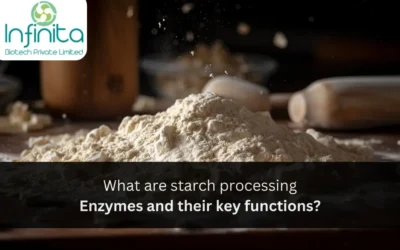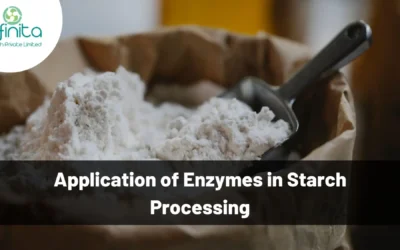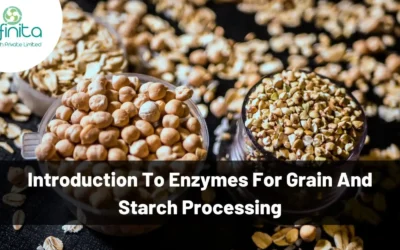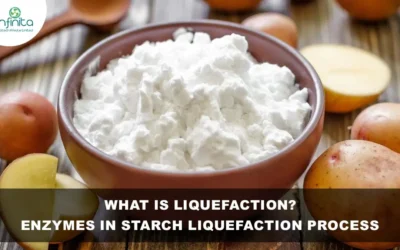What Is Glucoamylase? Important Uses in Starch Processing
Glucoamylase is amongst the most widely used and oldest catalysts in the food processing industry. Amongst the major glucoamylase enzyme functions is the saccharification of partially produced dextrin or starch to glucose. This makes for a vital substrate for several fermentation processes and a wide range of beverage and food industries. For traditional purposes, glucoamylase has been made through filamentous fungi, though a diversified group of microorganisms produces the glucoamylase enzyme since they produce it in larger amounts extracellularly.
The fungal glucoamylases that are commercially used have limitations like acidic pH requirement, moderate thermostability, and lower catalytic activity which in turn, increases the processing cost. However, the search for new glucoamylases as well as protein engineering has been the major areas for research over the past few years.
Structure of glucoamylases
Glucoamylases are amongst the main enzymes that are involved in the hydrolysis of starch. They are exo-acting enzymes that tend to release consecutive glucose units from the starch molecules’ non-reducing ends. Glucoamylases are known as microbial enzymes which are present in bacteria, fungi, and archaea but not in animals and plants.
Structurally, glucoamylases are classified in the family 15 of the glycoside hydrolases and have characteristics that consist of an invariable presence of catalytic domain having an (α/α)₆-fold, which is bound often to the non-catalytic domain of the diverse function and origin.
The fungal glucoamylases are extremely important biotechnologically since they are used in larger amounts in industries and have been in extensive study and research over the past 30 years. The prokaryotic glucoamylases have a biotechnological relevance since they are generally thermophilic enzymes that are active at higher temperatures.
Uses Of Glucoamylase In Starch Processing
Most of the starches that have an industrial application consist of about 80% amylopectin. The branching points are present on about every 20 to 25 D-glucose units and hence, the amylopectin consists of 4-5% of α-1,6 glucosidic linkages.
During the process of starch conversion, starch is first allowed to gelatinize and solubilize at higher temperatures. During this process, the long-chain molecules get broken down into their smaller units known as maltodextrins that can either be in the linear or branched form.
Image source: https://static-01.hindawi.com/articles/er/volume-2012/921362/figures/921362.fig.007.jpg
The α-1, 6-glucosidic linkages that are present in the starch molecules act as a barrier to the activities of several starches hydrolyzing enzymes during the process of saccharification, which is then followed by the process of gelatinization. When starch undergoes the process of hydrolysis by the α-amylases, this endo-acting enzyme bypasses the branch points. However, in general, it is not capable to hydrolyse the α-1,6 glucosidic linkages. Hence, as a result, the amylopectin gets partially degraded.
The branch points consisting of the α-1,6 glucosidic linkages are resistant to attack. Their presence also helps in imposing a specific degree of resistance on the neighboring α-1,4 linkages. Hence, a prolonged action of the α-amylase on amylopectin tends to result in the formation of α-limit dextrins, which are no more susceptible to the further process of hydrolysis by α-amylase. Similarly, when amylopectin gets treated with β-amylase, the process of hydrolysis tends to stop when the 1,6-α branch point is approached, which results in the formation of the β-limit dextrins.
During the process of saccharification, the partially hydrolyzed amylopectin and amylose molecules get depolymerized by the action of glucoamylase, which helps in removing the glucose units step by step from the non-reducing chain ends. The rate of this reaction of hydrolysis by the glucoamylase enzyme varies greatly on the size of molecules, particular linkages, and the pattern in which the α-1,4 and α-1,6 linkages are arranged.
Glucoamylase tends to hydrolyze the α-1,4 links very efficiently. However, the hydrolysis occurs at a comparatively slower rate for the α-1,6 linkages.
Image source: https://static-01.hindawi.com/articles/er/volume-2012/921362/figures/921362.fig.008.jpg
Glucoamylase enzyme also helps in catalyzing the reverse reaction in which the dextrose molecules get combined to form maltose and isomaltose. When the α-amylase and glucoamylase are used in a sequence for the saccharification process of sago starch, isomaltose gets produced. However, treating a mixture of pullulanase and glucoamylase during the saccharification process of sago starch results in the production of glucose and no isomaltose.
The reverse reaction of dextrose typically consists of the condensation of a β-anomer of D-glucopyranose, either with an α– or a β-D-glucose molecule. This occurs in the presence of glucoamylase and the process is shown below:
𝐷-glucose+𝛽-𝐷-glucose→Dissacharide+H2O.
Isomaltose, however, cannot be enzymatically hydrolyzed into smaller units. Industrially, isomaltose is a by-product that decreases the overall yield of glucose and is not accepted in the high-fructose syrup which is used in the form of a sweetener. The incubation of maltodextrin along with a higher amount of glucoamylase results in the reduction of the final glucose concentration because of the continuous formation of isomaltose. Hence, it is important to minimize this reaction to increment the final glucose yield in the processing industry.
The efficiency of the saccharification reaction can be improved when a specific amylopectin-debranching enzyme is incorporated into the system. If a debranching enzyme such as glucoamylase and pullulanase is simultaneously used during the process of saccharification, the pullulanase would hydrolyze the branch points in the amylopectin residues, followed by the process of hydrolysis of the linear 1,4-α-glucosidic linkages by glucoamylase enzyme. Hence, as a result, the maximum dextrose levels that can be produced are higher.
Glucoamylase has significant importance in the fermentation and food industries for the saccharification process of starch and other similar oligosaccharides. Glucoamylase consecutively hydrolyzes the α-1,4 glycosidic bonds from the non-reducing ends of starch, which results in the production of glucose. To a lesser extent, it also possesses the ability to hydrolyze the α-1,6 linkages, which results in the production of glucose as the end-product.
When it comes to industrial applications, its principal use lies in the production of glucose, which serves as a feedstock for biological fermentation during the production of high fructose syrups or ethanol. It also helps in improving the barley mesh for the production of beer.
Glucoamylase is the key enzyme for the production of soy sauce and sake. Especially when it comes to the brewing of sake, glucoamylase plays an important role since the rate of fermentation depends on the activity of glucoamylase.
